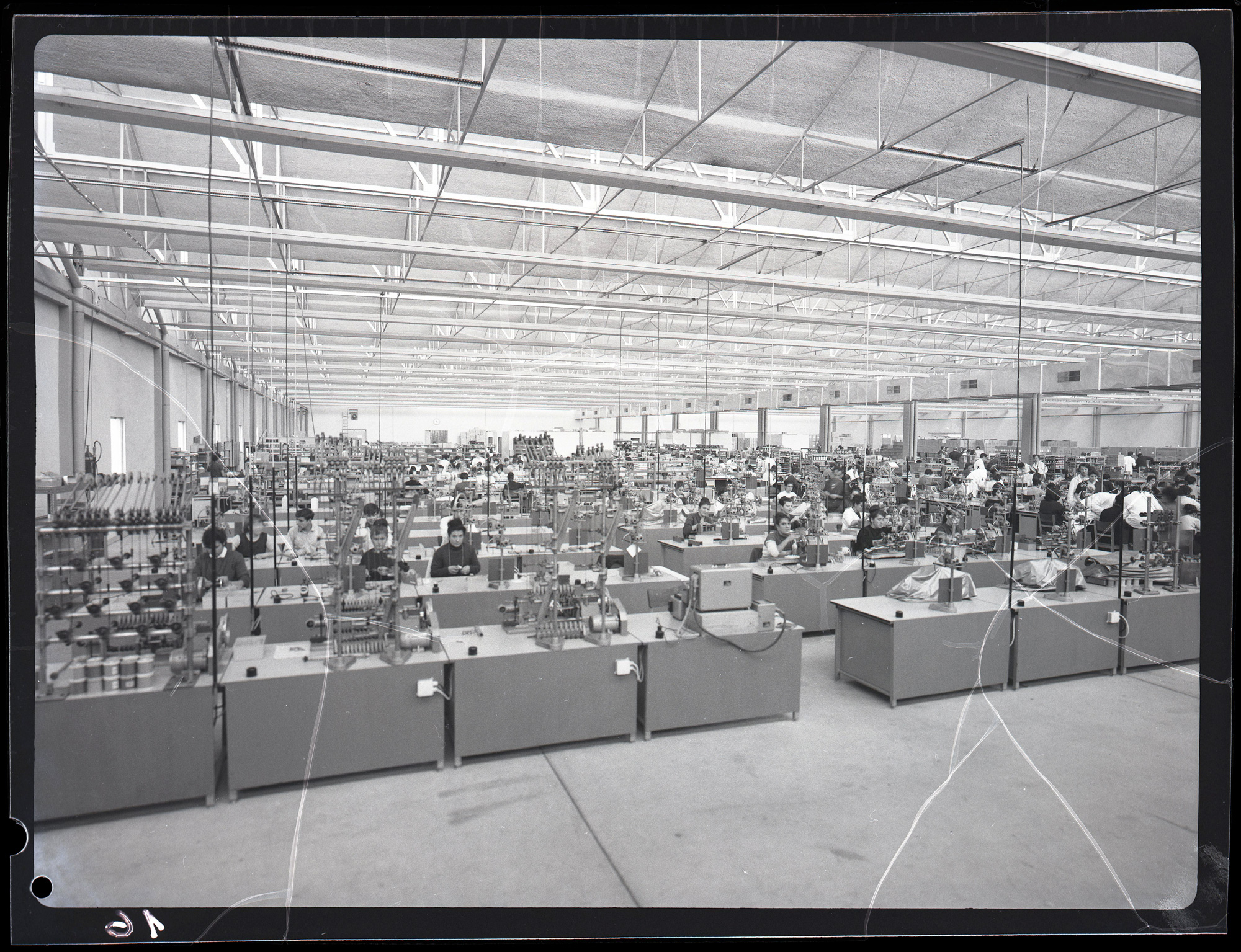1st shift – LABOUR/CONTRACT
PRODUCTION CHAIN
Many companies have demonstration rooms to attract customers, investors and visitors by representing the international spectrum and by branding their sales coverage. How would a company communicate its global production chain today?
34. Exhibition hall of the first factory for metal working tools. Period of State Socialism, 1944-1989. Interactive Museum of Industry, Gabrovo, Bulgaria.
Some of the processes of a production chain were divided in individual workstations controlled by one worker. What kind of production chain work could be done in the industrial settlement?
35. Workers in the factory Grundig. 1965-1997. Teófilo Rego Archive, Casa da Imagem – Manuel Leão Foundation, Vila Nova de Gaia, Portugal.
Production chain is a sequence of interconnected activities aimed at transforming raw materials into a good or service. The link between these various activities is made through a set of transactions relying on networks. The nature of production is characterised by the organisation and location of the activities in industrial buildings, industrial landscapes and as a wider systemic dimension of industrialization.
Production chains are often also called “value added” or “value chains” as each stage adds a certain amount of value. If the sequence of activities requires the use of state- of-the-art technology or intensive knowledge, the end product is high value-added- as an example, the production chain of a special medicine, a haute couture luxury garment. If the sequence of activities requires standard technology or low knowledge, the final product is considered low value-added – for example: a factory of shoe production with low-cost raw materials. This means that the cost of the production chain influences the cost of the final product and, consequently, the sale to the consumer.
Nowadays, within 4.0 Revolution, the production value differs from the physical examples before as the last step, distribution, occurs immaterial through individual gadgets and fingers. Press buttons on the internet and other digital interfaces (such as home cinema) are highly lucrative and the production chain of industrial entertainment has become more dematerialized.
More and more, each activity within a production chain is carried out by independent and geographically distant companies – as in car industries – and its distribution occurs in immaterial platforms – such as Spotify, Netflix, or Amazon. Many developed countries tend to displace the production of low value-added products to less developed countries with low cost labour, less social and environmental safety, which is ethically questionable. Western companies tend to focus on the production of products with higher added value and in the advertisement of different immaterial distribution platforms.

